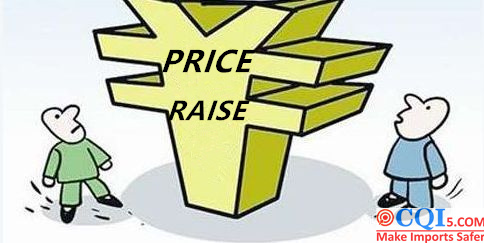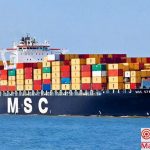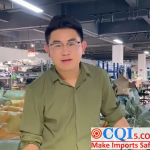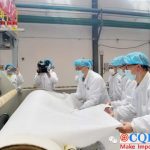Importers Need To Pay More Attention To Respond To Suppliers' Price Increases
In the fierce international trade market competition environment,international procurement optimization is one of the main levers for enterprises to control costs and pursue maximum benefits.
If enterprises can use their own resources and experience at domestic and aboard,integrate international procurement technology with products,supplier development,product procurement and supply chain management expertise through professional analysis and market information capture capabilities,it can improve the overall procurement quality,increase procurement profits and reduce procurement costs,thus enabling enterprises to focus on the development of core competitiveness and improve their competitiveness in the fierce international trade market.

So what exactly does purchasing mean?
In fact,it refers to the purchase behavior of enterprises to obtain materials and services from the supply market under certain conditions, so as to ensure the normal development of their own production or business activities.This is a kind of transaction and the transaction means that all the participants in the transaction are distributing benefits,so it is difficult for people not to think about whether there is an uneven distribution of benefits.In this situation,the position of “purchasing” has been excessively simplified,vilified in the market – because the public has always believed that people who take money to do things are the most greedy for money.In fact,procurement is an art of weigh benefit,choice and self-protection.A good purchaser needs to achieve buyer’s cost and quality objectives with the fair performance goal and need to achieve seller’s profit target at the same time.
The basic duty of purchasing is to comply with the 5R principle of purchasing,that is to obtain the Right Quantity of materials or services from the Right Vendor at the Right Time and at the Right Price while ensuring the Right Quality.What best reflects the purchasing ability is to balance the 5R relationship, ensure the normal supply of materials during the price increase period and reduce the direct raw material cost for the company in the fluctuating market environment.
As we all know,enterprises aim at profit and in any condition,enterprises are pursuing the maximization of profit and the highest return on investment.As a purchaser,it is inevitable that suppliers will ask for price increases.Then, after receiving the price increase request from the supplier,what should the purchasing staff do?
For the first situation,due to the rising prices of raw materials and the rising costs of suppliers,a fare increase is proposed.For purchasing,this is an external factor of cost increase.However,if purchasing is not clear about its cost,there will be information asymmetry and suppliers will increase their prices too much.
Case analysis:From mid-2009 to the beginning of 2011,the prices of industrial raw materials such as copper,rubber,aluminum,steel,etc.kept rising and many related suppliers took the opportunity to ask for price increases.One of the suppliers of rubber products called B,put forward the requirement of increasing the price by 40% at the end of 2010.Upon receiving the price increase notice,the purchasing Company A checked the first order contract,that was the first supply contract and order were signed in December 2009.By the end of 2010,the price of natural rubber had increased by about 37%.It seems reasonable to raise the price by 40% based on the increase of rubber price.

However,the purchasing staff of Company A did not reject the supplier’s price increase completely at the first time,but first analyzed the material cost of the product:in this kind of material,the weight ratio of rubber was about 50% and other materials did not show too much price fluctuation.At the same time,the production process of supplier B has not been changed.Therefore,according to the proportion of rubber 50% multiplied by the increase of rubber 37%,the reasonable increase should be 18.5%.Then the purchasing staff also went to Southeast Asia to look for new suppliers at once,but found that the rubber price was still increasing in a short time and the new supply channel could not take effect immediately.Considering that the order delivery time was rather tight,all the statistical data and calculation methods were immediately sent to the top department of A & B. Since the supplier B was not the Sole Source supplier for Company A,but only because Company A had signed B as the Single Source supplier,for the benefit of both parties and the long-term stable relationship,A and B determined the final increase of 15% after negotiation, and agreed that if the raw materials continued to increase by 15% within 90 days,the supplier can apply for price increase again;if the cumulative decline of raw materials reached 15% within 90 days,the buyer would ask for price reduction.
When the purchasing staff of Company A are dealing with such problems,analyzing the price composition and market conditions in depth,first of all,avoiding the supplier’s excessive price increase because of the lack of understanding about the cost.Secondly,actively seek new supply channels.Even if the new supply channels are not put into use immediately in a short time,Company A will have more choices next, so it will have more initiative in negotiations.Supplier B will also consider that this price increase is only based on the increase of raw material cost in the market and it is not intended to terminate the cooperation with A.The 40% quoted before only puts forward a profit maximization value,so for long-term cooperation,B eventually gave a lower and more appropriate price.
For the second situation,when the supply of materials is tight,or when the market resources of certain materials are scarce and tend to decrease gradually,even if their costs do not increase,the suppliers will propose to increase their prices.There are some unreasonable elements in this.
Case analysis:In the Spring Festival of 2020,due to the sudden outbreak of COVID-19 epidemic,the Chinese government informed lockdown,that many employees were unable to return to work,which caused most factories to stop production for more than one month,so that many materials in the market were in short supply.By the time the epidemic situation in China has been effectively controlled,more than 90% of enterprises have resumed their daily life,but the demand for masks is particularly high,which makes non-woven fabrics gradually scarce and tight in supply.Immediately after the outbreak of epidemic in foreign countries,the placed orders for many trade-oriented processing factories were arranged to the end of the year.Therefore, a client of CQI5 who was faced with a wet wipes supplier G requesting a price increase of up to 30% on the grounds that the domestic supply was becoming in great demand at the market.
Anson,the purchasing manager of this Canadian client,still kept in touch with CQI5 office and Chinese suppliers during the epidemic,so that he could already have a better understanding of those epidemic prevention materials were sold like hot cakes at the Chinese purchasing market.At the beginning,he had worried that the factory might fail to deliver goods or raise the price because of the epidemic,but the Chinese government’s determination to control the epidemic made him have great confidence in the orders,but he never thought that the supplier’s price increase would be so high.Anson told us that he communicated with the supplier G at the first time,but supplier G was tough and refused to negotiate in any form on the grounds that foreign demand was soaring at present.He also told us that the supplier had applied for advance payment in February before and mentioned that it was ready to store more materials.Therefore,Anson thought that the cost of supplier G should not rise to 30%,but only saw the prospect of price increase in the market and made unreasonable price increase demands on this condition.

At first, he was very upset.Later, he sought a turning point, because some of his clients agreed to postpone the order delivery date because of the epidemic situation abroad,so he gained more time.He analyzed that since the epidemic situation in China has been under control,the supply should be normalized in 2-3 months and at least the price will be partially reduced.The goods stored before his warehouse in Canada could still be supplied for about three months.Therefore, he immediately set out to find new suppliers,hoping to find more quotations from manufacturers and promised that if the price was right,he would immediately increase the order quantity and advance payment and even take delivery in cash.Cash delivery was very attractive to many small suppliers.Finally,he successfully signed orders with several new suppliers.As for the original supplier G,since the domestic raw materials tended to be reasonable after July,the supplier also took the initiative to cancel the price increase. However,it could be expected that Anson was disappointed with the performance of supplier G.Although supplier G was a medium and large enterprise with stable quality,it was hard to say whether it would cooperate deeply in the future.
When the purchasing manager Anson was dealing with such problems,he was tracking the supply and demand conditions of suppliers in real time and predicting the market trend.After being rejected by the supplier,he quickly evaluated the short-term and long-term consequences of failing to reach an agreement.First, he had to ensure the supply and confirm how long the goods in his warehouse could be supplied.For some orders that were not in a hurry,he delayed the production plan to avoid the peak cost and then quickly searched for new suppliers.In addition,he also got the biggest discount from other new suppliers through his own capital advantage,increased order quantity and cash purchase.Of course,this method needs to balance the relationship between inventory cost and price increase cost.
CQI5 Inspection’s Comments and Summary
As the world factory,China has the most complete industrial chain raw material supply and labor force, but the market conditions are changing all the time. Here is an article detailing the Difficulties and Challenges of Supply Chain Management in China. Whether the supplier asks for price increase or the purchaser asks for price reduction,it must be based on long-term mutual trust and cooperation, so as to ensure the interests of both suppliers and purchasers.Negotiation is one of the daily work of purchaser.Only by having good negotiation skills and methods will it play an important role in improving the profits of enterprises.In the daily management of purchasing suppliers,purchasing personnel should have a very clear purchasing strategy for each type of products and each supplier and implement monitoring management.In general,even if there are problems,the company can quickly come up with countermeasures.If a purchaser excessively squeezes the interests of suppliers for the benefit of the company,the final result will be one beat and two scattered.Finally,supplier only loses the sales, but gets a broken supply chain and the associated risks which may need to repair.Business cooperation does not rule out all possibilities and it can be handled in a positive,open and calm way.Often,the procurement costs in $ 1 and $2 are not the best,but $1.5 maybe the best.
CQI5 is committed to providing importers worldwide with product quality inspection services that far exceed those of our peers. If you are planning to import or have imported from China or Southeast Asian countries, please contact us cs’@’cqipro.com to learn more about how we can make your imports safer.
This article is an original article for CQI5 Inspection, who is committed to providing high-quality product inspection technology and know-how sharing for global importers and retailers to make imports safer.
All rights reserved. The contents of this website provided by CQI5 Inspection may not be reproduced or used without express permission.
For reprint, please contact with CQI5 Inspection, thank you.




